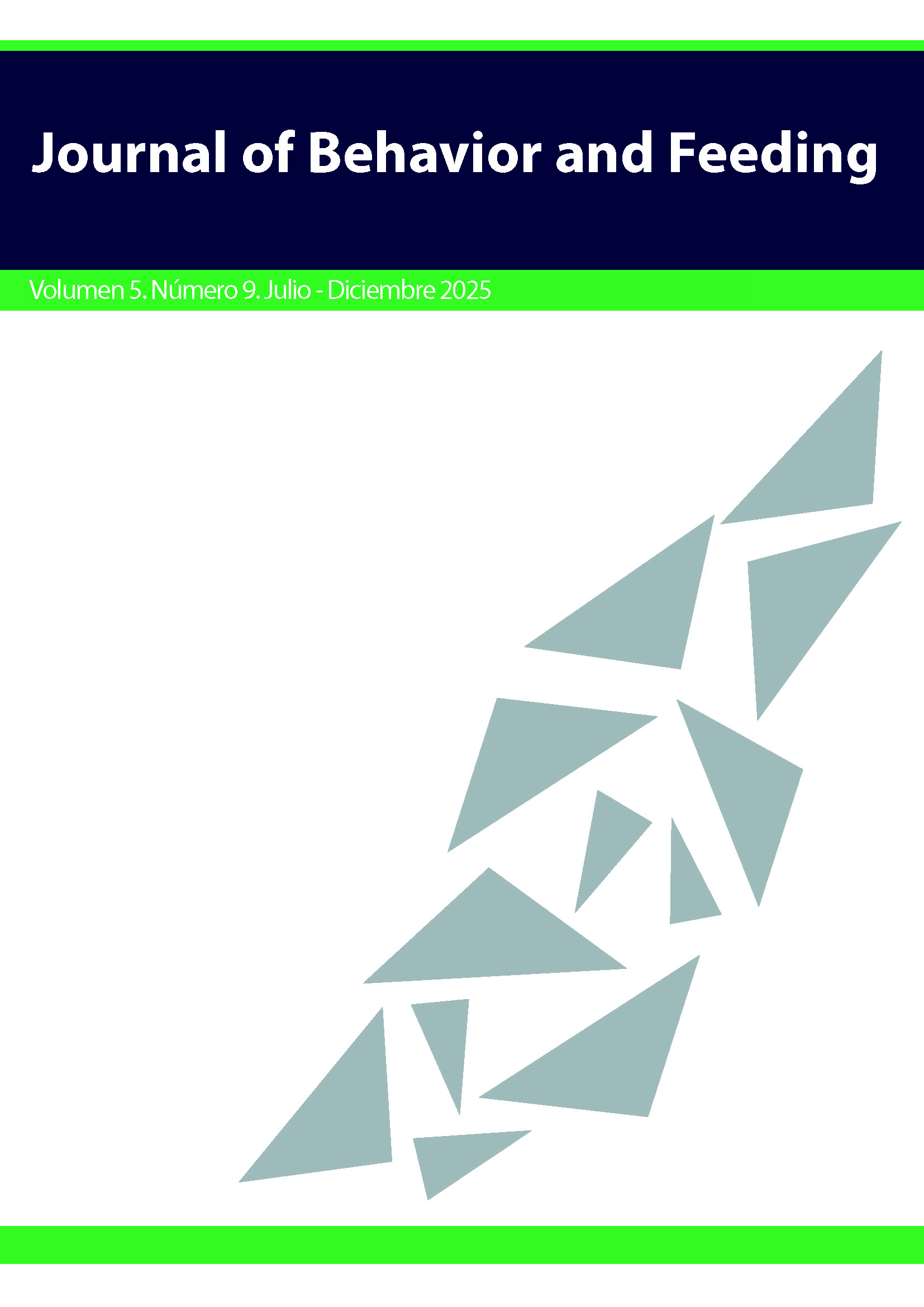Influencia de las redes sociales sobre la percepción corporal
DOI:
https://doi.org/10.32870/jbf.v5i9.79Palabras clave:
satisfacción corporal, imagen corporal, influencia de las redes sociales, bienestar psicológicoResumen
Los medios de comunicación, especialmente las redes sociales, juegan un papel clave en la difusión de ideales de belleza, lo que contribuye a la insatisfacción corporal, en jóvenes y adolescentes, especialmente en mujeres. Estos medios han transformado la forma en que nos comunicamos permitiendo interacciones bidireccionales; además de ello, se han caracterizado por ser espacios que promueven la comparación social e ideales de belleza que vulneran o afectan las percepciones personales sobre la imagen corporal, entendiéndola como el conjunto de pensamientos y sentimientos acerca del propio cuerpo, influenciada por factores sociales, culturales y experiencias individuales. Este concepto es especialmente relevante en jóvenes, quienes son más susceptibles a los estándares de belleza impuestos por los medios de comunicación. Estos estándares, especialmente la delgadez, pueden llevar a prácticas riesgosas, baja autoestima, trastornos alimentarios o síntomas de depresión o ansiedad que afectan la salud. A pesar de su impacto negativo en la percepción de la imagen corporal, las redes sociales también pueden convertirse en espacios que fomenten la diversidad y la aceptación del cuerpo. Se sugieren estrategias como centrarse en la funcionalidad y diversidad corporal, adoptar una perspectiva crítica ante los contenidos irreales y limitar o pausar el uso de estas plataformas. De este modo, las redes sociales pueden ser herramientas positivas que impulsen una visión más inclusiva del cuerpo.
Descargas
Citas
Alleva, J. M., Martijn, C., Van Breukelen, G. J., Jansen, A., y Karos, K. (2015). Expand your horizon: The influence of showing functionality over appearance on body satisfaction and interest in cosmetic surgery. British Journal of Health Psychology, 20(1), 146-163. https://doi.org/10.1016/j.bodyim.2015.07.001
Alruwayshid, M. S., Alduraywish, S. A, Allafi, A. H., Alshuniefi, A. S., Alaraik, E. F., Alreshidi, F., Almughais, E. y Alruwayshid, N. S. (2021). The influence of social media on body dissatisfaction among college students. Journal of Family Medicine and Primary Care, 10(4). https://doi.org/10.4103/jfmpc.jfmpc_1529_20
Bazán, C. I. y Miño, R. (2015). La imagen corporal en los medios de comunicación masiva. Psicodebate, 5(1). https://doi.org/10.18682/pd.v15i1.482
Benucci, S., Fioravanti, G., Silvestro, V., Spinelli, M. C., Brogioni, G., Casalini, A., Allegrini, L., Altomare, A. I., Castellini, G., Ricca, V. y Rotella, F. (2024). The impact of following instagram influencers on women's body dissatisfaction and eating disorder symptoms. Nutrients, 16. https://doi.org/10.3390/nu16162730
Bissonette Mink, D., y Szymanski, D. M. (2022). TikTok use and body dissatisfaction: Examining direct, indirect, and moderated relations. Body Image, 43, 205–216. https://doi.org/10.1016/j.bodyim.2022.09.006
Boursier, V., Gioia, F., y Griffiths, M. D. (2020). Do selfie-expectancies and social appearance anxiety predict adolescents’ problematic social media use? Computers in Human Behavior, 110, 106395. https://doi.org/10.1016/j.chb.2020.106395
Cash, T. F. (2004). Body image: past, present, and future. Body Image, 1(1), 1-5. https://doi.org/10.1016/S1740-1445(03)00011-1
Chang, L., Li, P., Loh, R. S. M., y Chua, T. H. H. (2019). A study of Singapore adolescent girls’ selfie practices, peer appearance comparisons, and body esteem on Instagram. Body Image, 29, 90-99. https://doi.org/10.1016/j.bodyim.2019.03.005
Clinic Barcelona. (2024). La Influencia de las redes sociales en la percepción del cuerpo y la salud mental. Portal Clinic. https://www.clinicbarcelona.org/noticias/la-influencia-de-las-redes-sociales-en-la-percepcion-del-cuerpo-y-la-salud-mental#:~:text=Impacto%20en%20la%20Percepci%C3%B3n%20Corporal&text=Las%20redes%20sociales%20han%20amplificado,en%20t%C3%A9rminos%20de%20apariencia%20f%C3%ADsica.
Cohen, R., Newton-John, T. y Slater, A. (2017). The relationship between Facebook and Instagram appearance-focused activities and body image concerns in young women. Body Image, 23. https://doi.org/10.1016/j.bodyim.2017.10.002
Correa, S. (23 julio de 2020). Body positive: ¿promueve o no la obesidad? Journey Sports. https://journey.app/blog/body-positive-promueve-o-no-la-obesidad/#Pros-y-contras-delbody-positive
Cortez, D., Gallegos, M., Jiménez T., Martínez, P., Saravia, S., Cruzat-Mandich, C., Díaz-Castrillón, F., Behar, R. y Arancibia, M. (2016). Influencia de factores socioculturales en la imagen corporal desde la perspectiva de mujeres adolescentes. Revista Mexicana de Trastornos Alimentarios, 7(2), 116-124. https://doi.org/10.1016/j.rmta.2016.05.001
Del Prete, A., y Redon Pantoja, S. (2020). Las redes sociales on-line: Espacios de socialización y definición de identidad. Psicoperspectivas, 19(1), 1-11. https://doi.org/10.5027/psicoperspectivasVol19-Issue1-fulltext-1834
De Vries, D. A., Peter, J., de Graaf, H., y Nikken, P. (2016). Adolescents’ social network site use, peer appearance-related feedback, and body dissatisfaction: Testing a mediation model. Journal of Youth and Adolescence, 45(1), 211-224. https://doi.org/10.1007/s10964-015-0266-4
Engeln, R., Loach, R., Imundo, M. N. y Zola, A. (2020). Compared to Facebook, Instagram use causes more appearance comparison and lower body satisfaction in college women. Body Image, 34. https://doi.org/10.1016/j.bodyim.2020.04.0
Evens, O., Stutterheim, S. E., y Alleva, J. M. (2021). Protective filtering: A qualitative study on the cognitive strategies women use to promote positive body image in the face of beauty-ideal imagery on Instagram. Body Image, 39, 40-52. https://doi.org/10.1016/j.bodyim.2021.06.002
Góngora, V. C. (2023). Actividades en redes sociales, insatisfacción corporal, ideales de belleza y apreciación corporal en mujeres adultas. Psychology, Society and Education, 15(2), 19-27.https://dx.doi.org/10.21071/psye.v15i2.15798
Grupo NB. (2024). ¿Qué es la imagen corporal?. Grupo NB Psicología. https://nbpsicologia.es/que-es-la-imagen-corporal/
Hache, A., Vergés N., Manzanares, G., Escobar, M., Quijano, H. y Cornelio, I. (2017). Redes sociales en perspectiva de género: Guía para conocer y contrarrestar las violencias de género on-line. Instituto Andaluz de Administración Pública. https://www.juntadeandalucia.es/sites/default/files/2020-04/redessociales.pdf
Jarman, H. K., Marques, M. D., McLean, S. A., Slater, A., y Paxton, S. J. (2021). Motivations for social media use: Associations with social media engagement and body satisfaction and well-being among adolescents. Journal of Youth and Adolescence, 50(12), 2279-2293. https://doi.org/10.1007/s10964-020-01390-z
Jiotsa, B., Naccache, B., Duval, M., Rocher, B., y Grall-Bronnec, M. (2021). Social media use and body image disorders: Association between frequency of comparing one’s own physical appearance to that of people being followed on social media and body dissatisfaction and drive for thinness. International Journal of Environmental Research and Public Health, 18(6). https://doi.org/10.3390/ijerph18062880
Kelly, Y., Zilanawala, A., Booker, C., y Sacker, A. (2018). Social media use and adolescent mental health: Findings from the UK Millennium Cohort Study. EClinicalMedicine, 6, 59–68. https://doi.org/10.1016/j.eclinm.2018.12.005
Lieberman, M., Gauvin, L., Bukowskic, W. y White, D. (2001). Interpersonal influence and disordered eating behaviors in adolescent girls: The role of peer modeling, social reinforcement, and body-related teasing. Eating Behaviors, 2(3), 215-236. https://doi.org/10.1016/s1471-0153(01)00030-7
Lozano-Muñoz, N., Borrallo-Riego, Á., y Guerra-Martín, M, D. (2022). Influencia de las redes sociales sobre la anorexia y la bulimia en las adolescentes: una revisión sistemática. Anales del Sistema Sanitario de Navarra, 45(2). https://dx.doi.org/10.23938/assn.1009
Marengo, D., Longobardi, C., Fabris, M. A., y Settanni, M. (2018). Highly-visual social media and internalizing symptoms in adolescence: The mediating role of body image concerns. Computers in Human Behavior, 82, 63-69. https://doi.org/10.1016/j.chb.2018.01.003
Pérez, F. M. (2024). El movimiento body positive. Gaceta CCH. https://gaceta.cch.unam.mx/es/el-movimiento-body-positive
Prieler, M., Choi, J., y Lee, H. E. (2021). The relationships among self-worth contingency on others’ approval, appearance comparisons on Facebook, and adolescent girls’ body esteem: A cross-cultural study. International Journal of Environmental Research and Public Health, 18(3), 901. https://doi.org/10.3390/ijerph18030901
Pryde, S., y Prichard, I. (2022). TikTok on the clock but the #fitspo don’t stop: The impact of TikTok fitspiration videos on women’s body image concerns. Body Image, 43, 244–252. https://doi.org/10.1016/j.bodyim.2022.09.004
Rodgers, R. F., Slater, A., Gordon, C. S., McLean, S. A., Jarman, H. K., y Paxton, S. J. (2020). A biopsychosocial model of social media use and body image concerns, disordered eating, and muscle-building behaviors among adolescent girls and boys. Journal of Youth and Adolescence, 49(2), 399-409. https://doi.org/10.1007/s10964-019-01190-0
Salazar, Z. (2007). Imagen corporal femenina y publicidad en revistas. Revista de Ciencias Sociales, 2(116), 71-85. https://www.redalyc.org/pdf/153/15311605.pdf
Saucedo-Fernández, D. L. (2023). Emociones, actitudes y creencias relacionadas a la obesidad en estudiantes y profesionales de la salud [Tesis de licenciatura, Universidad Nacional Autónoma de México] Repositorio de la Dirección General de Bibliotecas y Servicios Digitales de Información.
Schmuck, D., Karsay, K., Motthes, J., y Stevic, A. (2019). Looking up and feeling down: The influence of mobile social networking site use on upward social comparison, self-esteem, and well-being of adult smartphone users. Telematics and Informatics, 42(73). https://doi.org/10.1016/j.tele.2019.101240
Shah, J., Das, P., Muthiah, N., y Milanaik, R. (2019). New age technology and social media: Adolescent psychosocial implications and the need for protective measures. Current Opinion in Pediatrics, 31(1), 148-156. https://doi.org/10.1097/MOP.0000000000000714
Smith, O. E., Mills, J. S., y Samson, L. (2024). Out of the loop: Taking a one-week break from social media leads to better self-esteem and body image among young women. Body Image, 49, 101715. https://doi.org/10.1016/j.bodyim.2024.101715
Statista. (2022). Number of social media users worldwide from 2017 to 2027. https://www.statista.com/statistics/278414/number-of-worldwide-social-network-users/
Tiggemann, M. (2011). Sociocultural perspectives on human appearance and body image. En T. F. Cash y L. Smolak (Eds.), Body image: A handbook of science, practice, and prevention (pp. 12-19). Guilford Press. https://catalog.nlm.nih.gov/discovery/fulldisplay/alma9915649893406676/01NLM_INST:01NLM_INST
Tiggemann, M., y Miller, J. (2010). The internet and adolescent girls’ weight satisfaction and drive for thinness. Sex Roles, 63, 79–90. https://doi.org/10.1007/s11199-010-9789-z
Tiggemann, M., y Slater, A. (2013). NetGirls: The internet, Facebook, and body image concern in adolescent girls. International Journal of Eating Disorders, 46, 630–633. https://10.1002/eat.22141.
Tiggemann, M., Hayden, S., Brown, Z. y Veldhuis, J. (2018). The effect of Instagram “likes” on women's social comparison and body dissatisfaction. Body Image, 26, 90-97. https://doi.org/10.1016/j.bodyim.2018.07.002
Tylka, T. L. y Wood-Barcalow, N. L. (2015). What is and what is not positive body image? Conceptual foundations and construct definition. Body Image, 14, 118-129. https://doi.org/10.1016/j.bodyim.2015.04.001.
Vall-Roqué, H., Andrés, A., y Saldaña, C. (2021). The impact of COVID-19 lockdown on social network sites use, body image disturbances and self-esteem among adolescent and young women. Progress in Neuro-Psychopharmacology and Biological Psychiatry, 110. https://doi.org/10.1016/j.pnpbp.2021.110293
Vaquero-Cristóbal, R., Alacid, F., Muyor, J. M. y López-Miñarro, P. A. (2013). Imagen corporal; revisión bibliográfica. Nutrición Hospitalaria, 28(1). https://dx.doi.org/10.3305/nh.2013.28.1.6016
Vincente-Benito, I. y Ramírez-Durán, M. (2023). Influence of social media use on body image and well-being among adolescents and young adults: A systematic review. Journal of Psychosocial Nursing and Mental Health Services, 61(12). https://doi.org/10.3928/02793695-20230524-02.
Zuñiga, Y., Guzmán-Cortés, J. A., Sánchez, J. T., Bolaños-Ceballos, F. y Canales, S. F. (2024). La influencia de las redes sociales en la percepción de la imagen corporal en mujeres jóvenes: Una revisión narrativa. DIVULGARE Boletín Científico de la Escuela Superior de Actopan, 12, 1-9. https://doi.org/10.29057/esa.v12iEspecial.13308
Publicado
Cómo citar
Número
Sección
Licencia
Derechos de autor 2025 Autoras

Esta obra está bajo una licencia internacional Creative Commons Atribución 4.0.
This is an open-access article distributed under the terms of the Creative Commons Attribution License (CC BY). The use, distribution or reproduction is permitted, provided the original author(s) and the copyright owner(s) are credited and that the original publication in this journal is cited, in accordance with accepted academic practice. No use, distribution or reproduction is permitted which does not comply with these terms.









